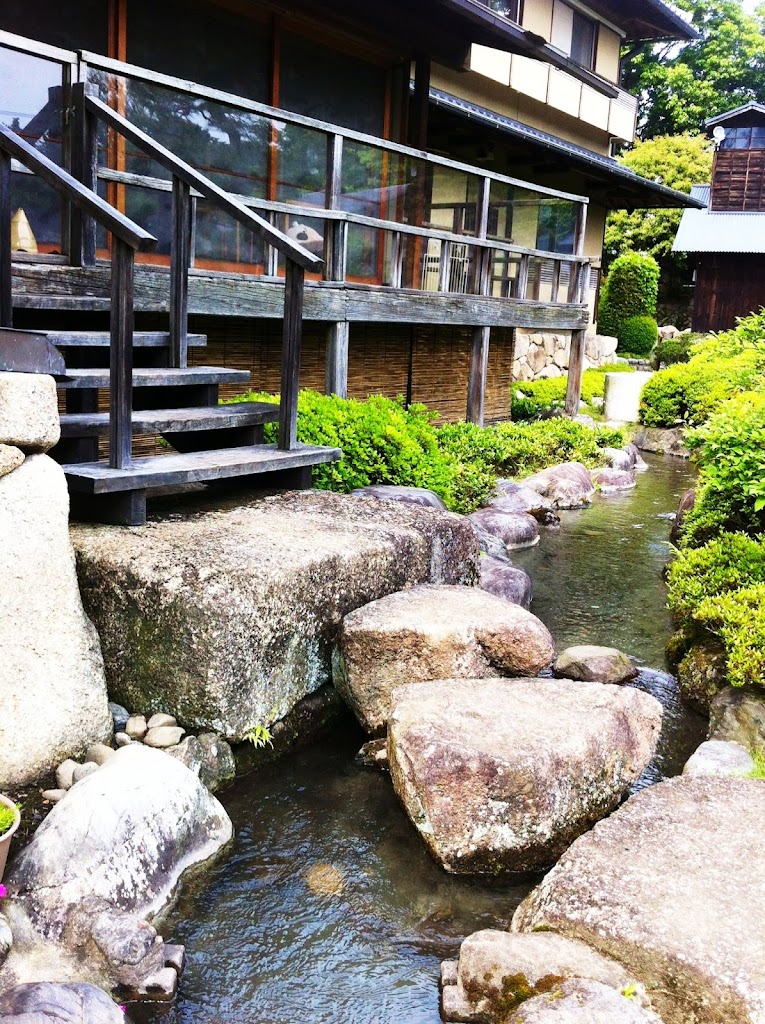At 190 years old, Tamura Shuzojo (田村酒造所) (www.seishu-kasen.com) is the oldest sake brewery in the Tokyo area. It is located approximately 1-hour by train (on Chuo JR line towards Ome), west of Tokyo in a suburb called Fussa. The Yokota Air Force base is located nearby.
My (Akiko) dad inquired about visiting the facility, and we were granted a private tour for the 7 of us. They were very worried about the language barrier, as they do not speak any English, so we reassured them that between me and my dad, we should be able to translate for them. As it turns out, translating is a tough job, especially when I am also unfamiliar with the process, but I think the group got the general idea! During the 1-hour tour, we were shown the areas depicted in the diagram below, ending with a tasting, of course...
(The 26 mile aqueduct and Tamura's private intake pump that looks like a fire hydrant)
Since 1822, the Tamura family has been making sake in the Fussa village. Currently, the 16th generation Tamura is the sake master. The location of the brewery is largely in part due to the spring water source. Water from the same well dug 190 years ago is still being used to make the sake. In fact, their brand name is called Kasen, or 'spring of joy'. A 26 mile aqueduct diverting water from the Tama River was constructed in 7 months during the Edo Period (1653 AD). This aqueduct is now a historical site. This was the main drinking water and water supply for daily living in this region. 33 intake watersheds off of the main aqueduct were created to divert the water through the neighborhoods. Only 2 of them are privately owned, including the intake that goes to the Tamura property. In the olden days, this watershed helped turn the watermill used to grind and polish the rice kernels for sake.
(Old watershed through Tamura's property)
(Former water mill where rice kernels were polished down by the stones)
Albeit the difference in ingredients, the sake brewing process is more similar to beer than wine.
RICE: special brown rice for making sake called shuzo kotekimai is larger, stronger, and contains less protein and lipids than rice that is eaten. The rice is first polished down to remove the outer bran layer to maximize the central, starchy component of the grain called shinpaku. The amount of the outer layer polished off affects the quality of the sake. The more polished = higher quality. Typically, about 30% of the outer layer is removed for sake, but at Tamura Sake Brewery, they usually remove 55% of the bran, and up to 70% for the most premium brands.
KOJI: The rice is washed, soaked, then steamed. The steamed rice is then inoculated for 2 days with the mold spore, Aspergillus oryzae, or koji in Japanese. Unlike beer where the malt naturally has enzymes to convert the starch to sugar (as food for the yeast), rice does not naturally have these enzymes. The koji spores provide the needed enzymes to convert the rice starch into sugar.
(original 190 year old brewery building with old wooden beams without nails. No damage from the most recent major earthquake in 2011.)
YEAST: While the koji is working, yeast is added to the koji/rice/water mixture, converting the sugar into alcohol. This is done over 3 weeks in tanks at a cool temperature. The premium sakes are deliberately fermented slowly at a very low temperature over a longer period of time (5 weeks).
PRESSING: The sake is filtered through a press by removing the solids.
PASTEURIZATION: The sake is then pasteurized at 65 degrees Celsius (149 degrees Fahrenheit) and bottled for longer storage. Unpasteurized sake is called namazake, and should be consumed relatively quickly or else it will spoil. All sake should be consumed within a year of bottling. It does not age well like wine.
We also took a tour of the grounds full of beautiful trees and plants. 2 very large cedar trees were planted 700-800 years ago, and still serves to keep the brewery building cool from the summer heat.
At the end, we were able to sample several grades of sake, and of course, we all made purchases!
If anyone is interested in making a trip to this sake brewery, my suggestion is to have a Japanese speaking person call, make a reservation, and bring along an interpreter.
(the original well)












